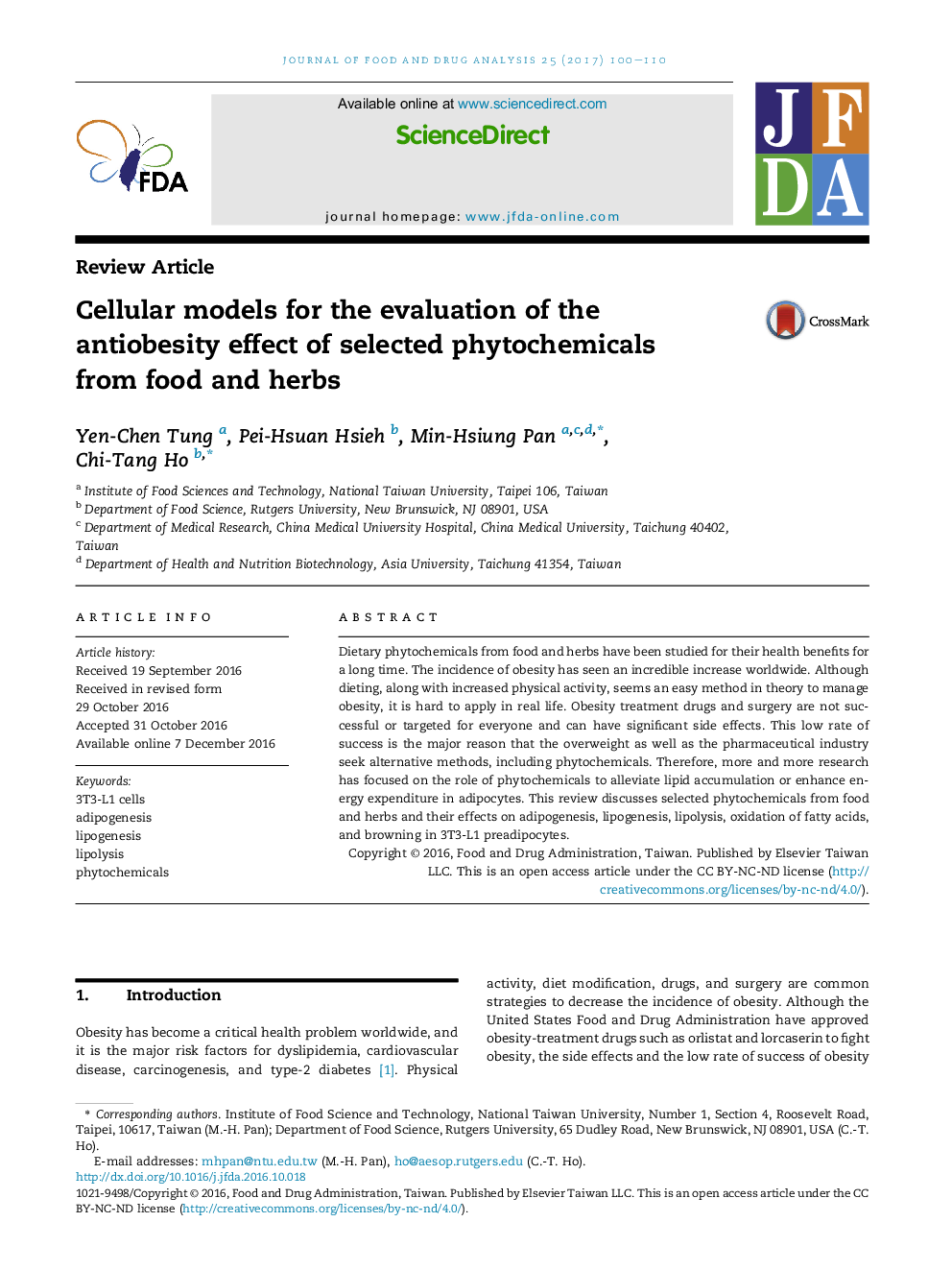| Article ID | Journal | Published Year | Pages | File Type |
|---|---|---|---|---|
| 5551075 | Journal of Food and Drug Analysis | 2017 | 11 Pages |
â¢Obesity is an important health issue and energy imbalance is a major cause of obesity.â¢The 3T3-L1 preadipocyte is a well-established model to investigate the process of adipogenesis, lipogenesis, lipolysis, oxidation of fatty acids, and browning.â¢Dietary phytochemicals have been studied for their antiobesity effects by regulated adipogenesis, lipogenesis, lipolysis, oxidation of fatty acids, and browning in adipocytes.â¢Dietary phytochemicals could be candidates for treatment of obesity.
Dietary phytochemicals from food and herbs have been studied for their health benefits for a long time. The incidence of obesity has seen an incredible increase worldwide. Although dieting, along with increased physical activity, seems an easy method in theory to manage obesity, it is hard to apply in real life. Obesity treatment drugs and surgery are not successful or targeted for everyone and can have significant side effects. This low rate of success is the major reason that the overweight as well as the pharmaceutical industry seek alternative methods, including phytochemicals. Therefore, more and more research has focused on the role of phytochemicals to alleviate lipid accumulation or enhance energy expenditure in adipocytes. This review discusses selected phytochemicals from food and herbs and their effects on adipogenesis, lipogenesis, lipolysis, oxidation of fatty acids, and browning in 3T3-L1 preadipocytes.
Graphical abstractDownload high-res image (257KB)Download full-size image
